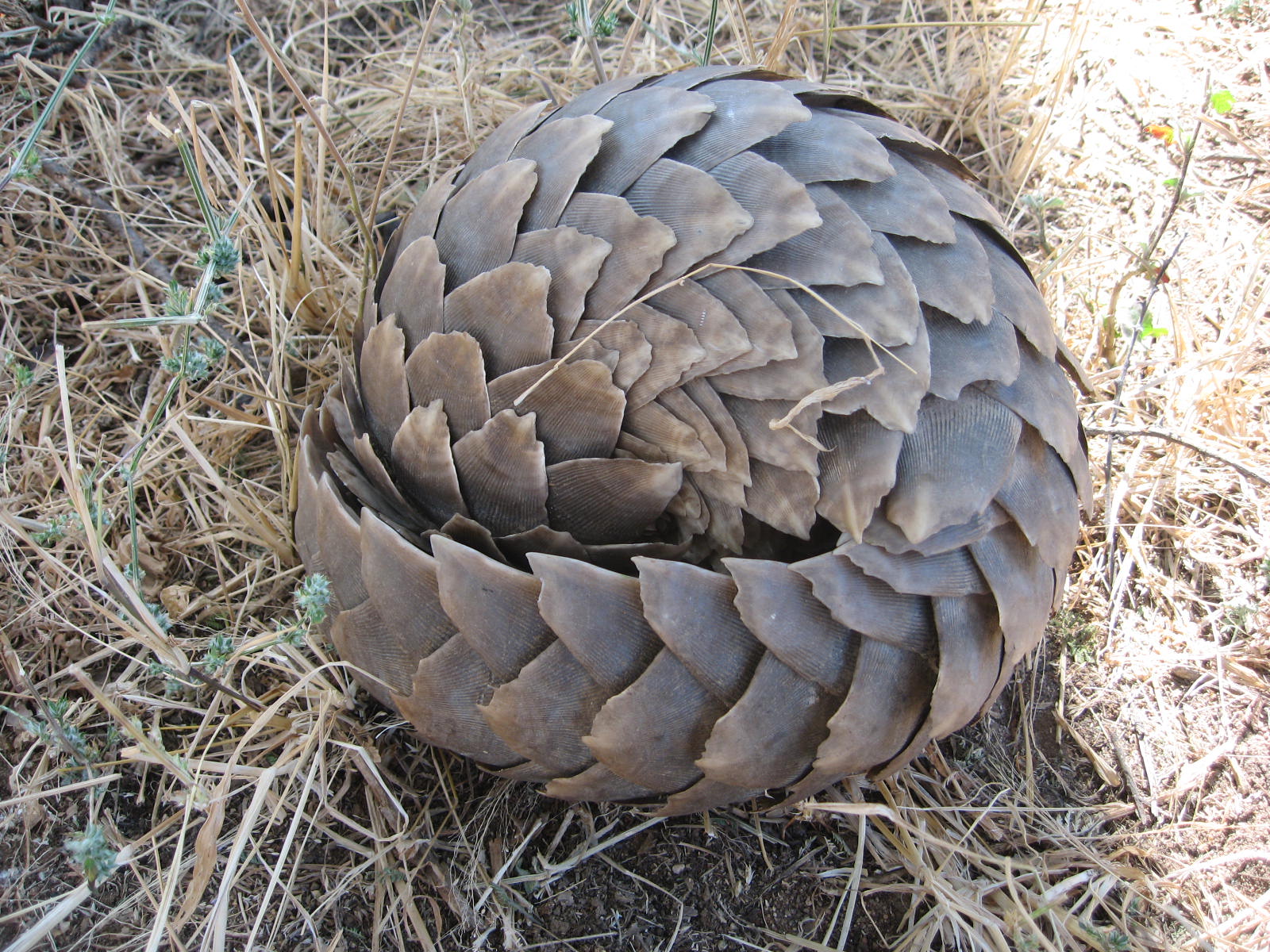We have our share of endangered species here at the museum: Red Wolves, Ring-Tailed and Red Ruffed lemurs all fall into that category. All three are pretty well known so I thought I would introduce you to a lesser known species: the Pangolin!

The Pangolin is a mammal covered in overlapping scales made from keratin. They are often called the “scaly anteater!” There are eight different species of pangolin all of which are endangered. They can be found in Africa and Asia. The Asian species have bristles that emerge from their scales while the African species do not. They prefer sandy soils that they can dig their burrows into. It’s not clear how long they live in the wild but they have been known to live 20 years in captivity.
When threatened they quickly roll themselves into a ball protected by their armor. Their scales are capable of a cutting action that can inflict some serious injuries on anything trying to eat it.

Pangolins are nocturnal and come out at night to feed. They use their keen sense of smell to sniff out termite and ant nests. They dig the insects up with their powerful claws and eat with their extremely long, sticky tongues. They actually have no teeth and instead they have a gizzard-like stomach made for grinding food. They must eat small rocks or sand to help with the grinding process.

Young pangolins can be seen riding on their mother’s back. The protective mother when threatened will ball around her offspring to protect it.
Pangolins are one of the most endangered mammals in the world mostly due to human threats. Asian pangolins are especially affected by habitat loss. In addition, pangolins are thought to process magic or charms. In some areas, pangolins are sacrificed for rainmaking ceremonies; in other areas, they are hunted for meat.

Photo taken by:Firdia Lisnawati at the Bali Zoo.
For more information on pangolins and ways to help them click this link!